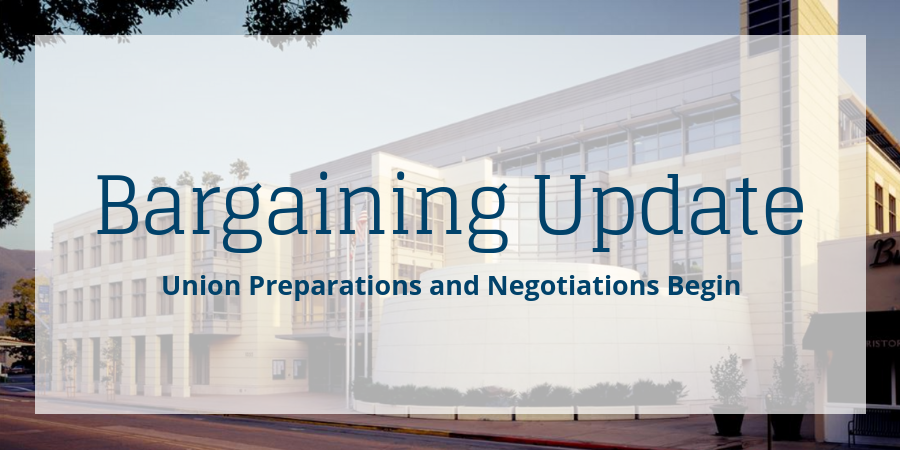
Bargaining Update: Union Preparations and Negotiation Begins
Author: Human Resources
Date: 4/19/2019 9:17 AM
In an effort to keep you informed, here is the latest about the bargaining process as the County and SLOCEA begin negotiations.
Last month, HR published an article that included “The Bargaining Process in 7 Steps.”
Since that article, the County completed the first two steps of the bargaining process: (1) identifying representatives and bargaining teams and (2) preparing for negotiations. The County has also begun step 3: Beginning negotiations with SLOCEA, our largest employee organization, as well as a few other associations.
Given the current point in the bargaining process, we wanted to share more information on what the second and third stages of the bargaining process commonly include.
Step 2: Pre-Negotiations Preparation
The parties prepare separately by meeting with their stakeholders to assess their needs and priorities and to gather data before commencing negotiations. Data normally includes market comparisons on employee and employer contributions in the areas of wages, benefits, and pension, but may also include operational items or other employee needs.
The data frequently discussed in negotiations and throughout the process is “comparability data”, or data collected from comparable or similar organizations and is used to compare the County’s employee offerings with those of other employers.
The comparison is typically done through a “market survey”, sometimes known as a “salary survey”, or “compensation survey”, that details the major components of compensation of comparable employers.
We primarily survey public agencies that are
- within close geographic proximity (a mix of surrounding counties and local public employers within San Luis Obispo County),
- counties throughout the state that are demographically similar, and
- private companies in San Luis Obispo County.
It is also common to gather data regarding broad compensation and cost of living trends.
Unions and employee associations may sometimes have a different view of comparability than employers. Each party is free to produce, present, and discuss data and data analysis to contribute to the bargaining process.
Monitoring and analyzing compensation plans are an ongoing effort. Consistently surveying other employers helps the County formulate and maintain compensation strategies and provides a foundation for plans that are competitive and sustainable.
Step 3: Negotiations Begin
The parties start meeting well in advance of the expiration of their MOU and/or before the beginning of the next fiscal year.
Negotiations begin by discussing “ground rules” that govern negotiations (such as protocols relating to exchange of information and proposals and released time for the employee organization’s team members) and setting future meeting dates.
The parties begin exchanging and introducing their priorities, sometimes opening proposals, and over a series of meetings, the parties discuss their respective proposals and explore possible compromises. The proposals will typically address many of the sections of the MOU (e.g., wages, employer contribution to benefits, hours of work, and a variety of operational issues such as uniform or specialty assignments pay).
We are committed to cooperation between labor and management and to making the County a great place to work. As the negotiations progress, we will continue to provide updates on important milestones and developments.
